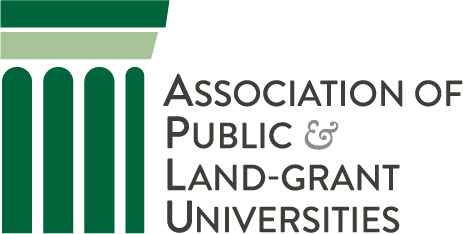In the path toward using adaptive learning technologies in the classroom to close equity gaps, college and university educators may have collected advice from peers, targeted particular courses, researched the software, and identified larger strategic goals. Eventually, educators also have to consider the implementation process and its many details. Strong results from adaptive learning will depend on paying close attention to how it actually gets put into practice to provide equitable access for Black, Latino, Indigenous, and poverty-affected students.
Karen Vignare, Executive Director of the Personalized Learning Consortium at the Association of Public and Land-grant Universities, provides consultation and technical assistance to colleges and universities in the Every Learner Everywhere network on implementing adaptive learning. She was also a contributor to an early version of the Adaptive Courseware Implementation Guide published by Every Learner Everywhere, Intentional Futures, the Association of Public and Land-grant Universities, and Achieving the Dream. Here she shares a summary of the main points she covers when working with university educators who are implementing adaptive learning to close equity gaps.
1. Align
Courses should align learning objectives to a coherent set of activities, content, and assessment. Adaptive learning often exposes misalignment in courses to experienced faculty who are too close to the material.
“If you’re in a faculty development session and you tell them content, assessment, and activities should be aligned, they’ll tell you they are,” Vignare says.
“But that’s like me and my Apple Watch. If you asked me how many steps I thought I walked in a day versus what my steps count tells me I walked, I would probably not guess that closely. The tool you’re using helps you see that gap.”
Set goals for your course, then draw connections between activities used in the adaptive learning courseware and other learning activities.
As students move through the courseware, learning data will reveal gaps between the content and students’ comprehension of it. Faculty can reach out to students as soon as they see the gap, but they also need to reflect on whether the content and assessment are aligned.
Resource on this topic — Improving Critical Courses Using Digital Learning & Evidence-based Pedagogy
2. Engage
Students flourish with active learning, and, when done well, adaptive learning makes students more active. You’ll want to design the course so students progress through learning modules, practice activities, and assessments while growing their knowledge and skills.
Make sure your course uses active learning strategies such as analysis, critical reflection, and knowledge construction. Include mechanisms to deal with learner variability. Incorporate academic and socio-emotional supports for any students who need them.
And then see if it is working. Monitor if students are engaged and if they are becoming more self directed in their learning Vignare says adaptive learning provides more student practice and preparation with content. By mastering those activities, students become more engaged.
Webinar on this topic — Transform Engagement: Interaction and Online Course Design
3. Motivate
Prompt feedback is an important part of motivating students, and adaptive learning provides many opportunities for it. “The student can measure their own progress as well as faculty,” Vignare says.
Make sure the assessments you build into adaptive learning courseware lead to feedback useful to your students’ understanding of the course concepts. Using courseware data, faculty can quickly reach out to individual students with messages of encouragement, guidance, and support.
Faculty can also use office hours meetings to show how a student is progressing compared to course expectations, and they can discuss how to effectively use other campus support services.
More on this topic: Caring for Students Playbook: Six Recommendations
4. Analyze
Use learning analytics data to understand individual progress and class progress and to shape your instruction.
That might be an immediate intervention for an individual student who is struggling. Or it might be revising the plan for the next unit to review a concept many in the class are struggling with.
It might also mean course-level and program-level adjustments for the next semester. For example, review of grade reports, engagement data, learning data, and course activities might reveal equity issues for some student populations better than grade data alone can. Disaggregating learning data provides an opportunity for a department to look more closely at how its curriculum is delivered.
This is one reason Every Learner Everywhere is supporting colleges and universities to implement adaptive learning in gateway courses that often have hundreds of students in a lecture-style format and are often a disproportionate barrier to progress for minoritized and poverty-affected students.
Vignare advises departments to conduct studies of the learning impacts of redesigned courses. Those studies should then be used to guide refinements to a course and implementations in other courses.
Program profile: How One University Uses Dashboard Data to Make Mid-stream Adjustments in Math Courses
5. Support
Implementing adaptive learning takes time and attention, and institutions need to provide faculty with resources, incentives, and recognition.
“Institutions really need to think about how to support faculty in better ways,” Vignare says. “Instructors wear many hats and need time to do course redesign well. Institutions need to look at ways to change faculty workload or obligations to free up needed time for course redesign.”
Support can also come in the form of project managers and instructional designers. But faculty, instructional designers, and project managers can only be effective if they have the support of senior leadership.
Related resource — Getting Started with Equity: A Guide for Academic Department Leaders
Work in phases and take the long view
Redesigning a course to implement adaptive learning is a big shift. Vignare recommends thinking about it in phases and encouraging the faculty involved to treat it as a process. For example:
- Identify the instructor or collaborative group of instructors and the institutional champions
- Identify major learning goals
- Build and test
- Scale
“The term we use is continuous improvement,” Vignare says. “Faculty should think about this over a number of years. When this is done, then I’ll improve that. This makes redesigning your course a much more manageable project.”
Download the Adaptive Learning Implementation Guide
Originally published April 2020. Updated August 2021 with additional information and references.



